Having a website is one of the first steps to make its way into the world of the digital market. The web is an incredibly large platform on which you can advertise and sell your product. However, often having a beautiful site, even with many visits, is not enough. If you want to achieve concrete results you need to do more. So, how can you create a professional website that converts users into real customers?
Items to be monitored
The first thing you should think about when you want to make a website is the goal that you intend to achieve this site. There may be several objectives, for example:
- Purchase of goods or services by users
- Collection of user data
- Download of pdf by users
It is important not to include more goals, or there is the risk of confusing users - and ourselves, resulting in confusing and too chaotic communication - and not reaching even one.
Once you’ve identified the goal, you move on to building a professional website that can convert.
5 tips on how to create a professional website that converts
1. Create a customized website
The first step is to create a functional website. It must reflect the brand, be easily navigable by users and must be built in such a way as to be as optimized as possible for search engines. This way it will be much easier for users to find the site among the first results of the search pages, when they are interested in the service or product that that site sells.
The website must load fast, it must be clear and not bore the user. Time is money, and if those who browse the site do not find what they are looking for, it is likely that they will look for it elsewhere. Creating a site that is easy to use, attractive but also clear helps to decrease the bounce rate, that is, exit from the site by users.
If you want to learn more about how to create a professional website, take a look at this in-depth.
2. Insert consistent and eye-catching CTAs
What are CTAs? The acronym stands for "call to action" and are the invitations addressed to the user to perform a certain action. They can be, for example, the contact button, the purchase button, the subscription to a newsletter and so on. They must be attractive, clearly visible, easy to recognize and consistent with brand communication. In little space and with few words you have to convince the users to complete that determined action.
CTAs must be used sparingly and lead to only one goal. Inserting multiple and with different objectives in a single page risks to confuse users and not lead to any result.

3. Make your site known on the right channels
Creating a website that reflects the brand and contains all the necessary information is sometimes not enough. It is important to optimize it at best for search engines through writing in SEO optics, a fair use of titles, subtitles and links, but not only. In fact, you can also sponsor the website on other communication channels. Three of these can be:
- Social media: Instagram, Facebook, LinkedIn, TikTok... each social media has its own modes of communication. It is important to choose the most suitable social media for your brand.
- Email marketing: Newsletter and email marketing can increase the number of users on the site.
- Google campaigns: sometimes working for the organic positioning of a site in search results is not enough. Leveraging Google campaigns to appear in the top ads is an investment. Often, indeed, organic growth and paid growth must go hand in hand.
4. How to create a professional website that converts: rewards for customers
One way to convert users is to create a small reward for those who achieve the goal. That is to say for those who leave their data to subscribe to a newsletter, who becomes a customer, who signs up and various other objectives. We talk, for example, of:
- free pdf
- discounts on subsequent purchases
- free products
- free shipping
and other useful elements to "delight" the user after he has indulged the CTA. In this way, we ensure that the user is more tempted to take action and then return, satisfied with the service received.
5. Analyze user behavior on the site
Once this is done, it is important to analyse how users behave on the website. Which channels do they come to the website? Which pages do they visit the most? What is the length of time spent on the individual pages and on the site in general? There are many metrics that can be taken into consideration.
By analyzing all the data, you can understand what works and what doesn’t. Following this analysis, you can make any changes, to try to have a greater conversion of users.
One of the most commonly used methods of making changes is the A/B test. You create two similar but different versions of the same page, of the same CTA, of various elements, and put them on trial for a precise period, first one and then the other. Eventually you collect the data and you evaluate which of the two versions has been most successful.

How can this be managed?
All this can be managed thanks to an all-in-one CRM such as HubSpot, of which Ekeria is a partner. Thanks to this platform you can create a customized professional website, manage emails, social networks, contacts, but also analyze data about visits to the site and generate the resulting reports.
HubSpot is the perfect tool for an all in one Inbound Marketing strategy that focuses on the customer, meeting their needs and allowing the brand to be known in a non-invasive way. Rely on those who realize websites Milan knows: take a look at our porfolio.
Ekeria is Certified Gold Partner HubSpot. If you want to grow your brand and find out how to create a professional website to convert, contact us for free advice.
.webp)





